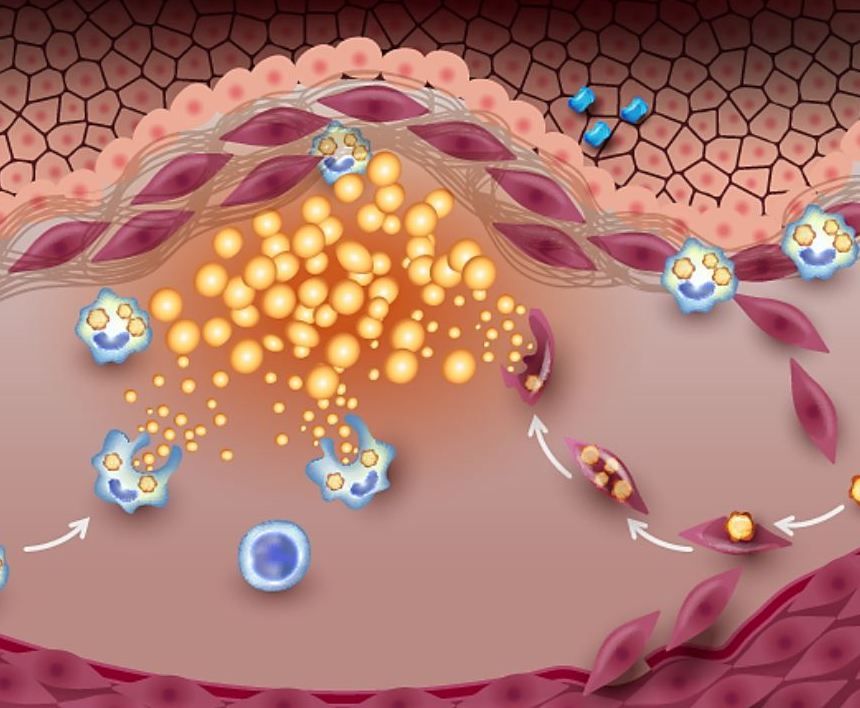- Clinical Technology
- Adult Immunization
- Hepatology
- Pediatric Immunization
- Screening
- Psychiatry
- Allergy
- Women's Health
- Cardiology
- Pediatrics
- Dermatology
- Endocrinology
- Pain Management
- Gastroenterology
- Infectious Disease
- Obesity Medicine
- Rheumatology
- Nephrology
- Neurology
- Pulmonology
Subclinical Atherosclerosis Risk Linked to A1c Below Prediabetes Threshold
In people without diabetes and considered low risk for CVD, A1c was associated in a graded, positive fashion with subclinical atherosclerosis, even at prediabetes levels.
©Tefi/Shutterstock.com

Glycated hemoglobin (HbA1c [A1c]) in individuals without diabetes and otherwise considered at low risk for cardiovascular disease (CVD) may help identify those at high risk for developing significant subclinical atherosclerosis (SA).
The suggestion is based on results of a study published online June 1 in the Journal of the American College of Cardiology that found a graded, positive association between A1c and the prevalence and multiterritorial extent of SA. The key finding, the authors wrote, is that SA is prevalent in the 21.1% of the study population with A1c values below the threshold for prediabetes (5.5% - 5.6%), "and therefore considered not to be at risk."
A1c >6.5% is the accepted cutoff point for diagnosing diabetes from the American Diabetes Association, and an A1c of 5.7% to 6.4% is the range for prediabetes.
The association between A1c and SA was independent of traditional cardiovascular risk factors (CVRF).
SA prevalence was also significant among study participants with A1c in the prediabetes range (5.7% - 6.4%) who were classified as low-risk by one of 2 commonly used CV risk estimating tools, "making this subset of asymptomatic individuals a potential target for interventions aimed at preventing progression of sub-clinical disease to clinical events," wrote senior author Valentin Fuster, MD, PhD, of the Icahn School of Medicine at Mount Sinai in New York City and Centro Nacional de Investigaciones Cardiovasculares Carlos III in Madrid, and colleagues.
In addition to exploring the association between A1c and SA extent, researchers also considered the additive value of A1c to classical risk factors for predicting the presence and extent of SA.
Participants were drawn from the observational PESA (Progression of Early Subclinical Atherosclerosis) study cohort (4184) of middle-aged adult employees of the Santander Bank Headquarters in Madrid, Spain. Prospective inclusion criteria were age between 40 and 54 years; free at baseline from CVD, chronic renal disease; not undergoing cancer treatment; body mass index (BMI)<40 kg/m2; and no life-threatening disease.
The final sample included 3,973 participants without diabetes; mean age was 45.7 years, 37.7% were women. Mean A1c was 5.4 ± 0.3% and median 10-year risk of CVD death was 0.35%, based on the Systematic Coronary Risk Estimation (SCORE) index. SA was assessed by 2-dimensional vascular ultrasound (2DVUS) and coronary artery calcium scoring (CACS). Median follow-up was 6 years.
RESULTS
The investigators report a positive association between A1c and both prevalence and multiterritorial extent of SA as assessed by 2DVUS and CACS (ptrend <.001). The association remained after controlling for traditional CVRF and was significant in all prediabetes groups, including in those below the prediabetes threshold, (A1c 5.5%-5.6%; OR 1.36, 95% CI 1.03-1.80, P=0.033) as noted above.
Overall, 43.8% of study participants were in the higher-risk categories corresponding to A1c 5.5% - 6.4%.
Fasting plasma glucose, investigators found showed no association with SA suggesting, they wrote, that “HbA1c a is a more useful biomarker of [SA] in people without diabetes.”
Individuals with moderate CVD risk predicted by SCORE algorithm had greater multiterriotiral extent of SA vs those at low risk. Investigators found, however, that higher A1c levels were associated with a significantly increased risk of SA in participants classified as low risk according to SCORE (<1%) (Pinteraction<.001) but not in those with moderate CV risk (SCORE 1-5%) (Pinteraction = 0.335).
Fuster et al reported that adding A1c to SCORE or ASCVD predictors modified the risk calculation in most risk categories.
Authors of an editorial accompanying the study say the absence of a significant association between higher A1c levels and SA in participants scored at moderate CVD risk should not be a surprise, "given the stronger association of risk factors like dyslipidemia and hypertension, found more commonly in intermediate-risk individuals, with atherosclerosis."
But, they add, that result in no way "impugns" the key finding that risk of SA in individuals considered at low risk for CVD is graded according to A1c, even at levels below the the value for pre-diabetes.
"The major takeaway from this analysis," they write, "is that HbA1c, and not FPG, can potentially be used as a tool to gain insight into risk of the presence and extent of SCA, and by proxy, CV [disease] risk, in individuals below the [type 2 diabetes] threshold in those considered at low CV [disease] risk.”
Study: Rossello X, Raposeiras-Roubin S, Oliva B, et al. Glycated hemoglobin and subclinical atherosclerosis in poeple without diabetes. J Am Coll Cardiol. 2021;77:2777–2791.
